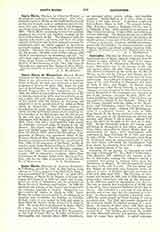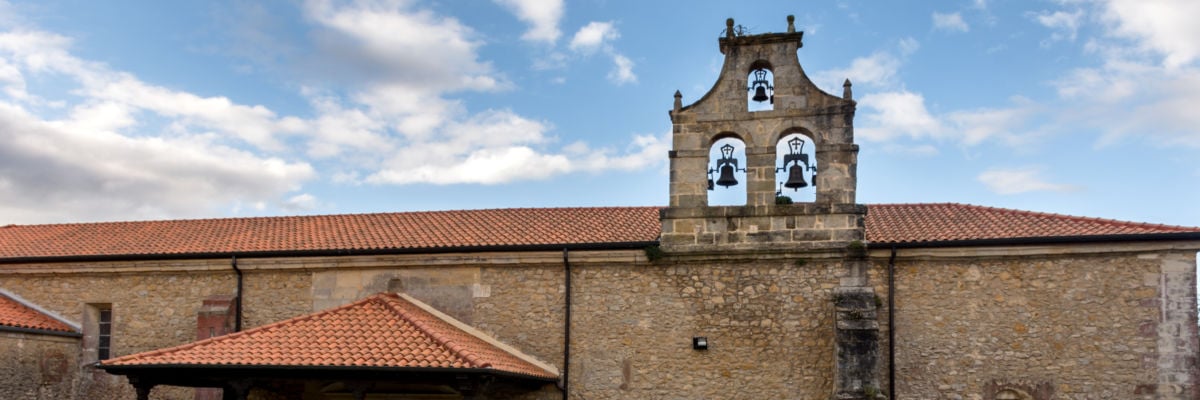

Santander, Diocese of (SANCTI ANDERII, SANTANDERIENSIS), in Spain, takes its name not from St. Andrew as some, misled by the sound of the name, believe, but from St. Hemeterius (Santemter, Santenter, Santander), one of the patrons of the city and ancient abbey, the other being St. Celedonius. The diocese is bounded on the north by the Bay of Biscay, on the east by Vizcaya and Burgos, on the south by Burgos and Palencia, on the west by Leon and Oviedo. It is suffragan of Burgos, and comprises most of the civil Province of Santander and parts of those of Alava and Burgos. In Roman times Santander was called Portus Victori, in memory of Agrippa’s having conquered it from the Cantabrians, and in the period of the reconquest was regarded as one of the Asturias-Asturias de Sant Ander, between the Rivers Saja and Miesa. The territory was repeopled by Alfonso I, the Catholic. Alfonso II, the Chaste, founded there the Abbey of Sts. Hemeterius and Celedonius, where the heads of those holy martyrs were kept. Alfonso VII, the Emperor, made it a collegiate church. As early as 1068, King Sancho II, the Strong, granted a charter to the Abbey and port of St. Hemeterius in reward for services, and Alfonso V did as much. Alfonso VIII gave the abbot the lordship of the town on July 11, 1187. In the fourteenth century the canons were still living in community in this abbey, and Abbot Nuno Perez, chancellor to Queen Maria, drew up constitutions for them; these constitutions were confirmed by King Fernando IV in 1312, and later by John XXII. The town of Santander aided King St. Ferdinand when he conquered Seville; it broke the iron chains with which the Guadalquiver had been closed, by ramming them with a ship-which is the armorial blazon of the city.
Santander did not become an episcopal see until the reign of Fernando VI. By a Bull of December 12, 1754, Benedict XIV confirmed the creation of the See of Santander, making the collegiate church a cathedral, and giving it territory taken from the Archdiocese of Burgos. In 1755 Fernando VI raised the town to the rank of a city. The last Abbot and first Bishop of Santander was Francisco Javier de Arriaza, a native of Madrid, who took possession in 1755 and ruled until 1761. The Province of Santander was formed in 1801, and in 1816 became an independent intendencia and one of the provinces in the definitive political organization (see Spain). The city at present has a population of 54,700 and is one of the most important harbors on the Bay of Biscay. The cathedral is a structure of very diverse periods, and at one time had the character of a fortress. Its lower portion contains a spacious crypt, called the parish church of Christ because it serves parochial uses. The dark and sombre character of the structure marks its original purpose of a pantheon. It consists of three naves with three apses forming as many chapels, and a baptistery has been erected in it. The building dates from the twelfth or early thirteenth century, but presents added features of many later periods. A spiral staircase, constructed in the wall, leads from the crypt to the cathedral properly so called, to which the cloister of the old abbey serves as vestibule, opening on the principal street (Rua Mayor) of the city. The church itself, exclusive of the capilla mayor, is formed of three naves of unequal height, 128M feet in length, and 59; feet in width. In the choir is buried the abbot, Pedro Luis Manso y Luniga (d. 1669), who had it built. In a corner of the nave on the Gospel side is a holy-water font of Arabic workmanship, probably brought as a memorial of the conquest from Cordoba where it served as a basin for ablutions; it bears a very poetical Arabic inscription, which has been translated by Don Pascual Gayangos. The capilla mayor, or principal chapel, was built late in the seventeenth century by Abbot Manuel Francisco de Navarrete y Ladren de Guevara (1695-1705). The relics of the martyrs Sts. Hemeterius and Celedonius are kept in the high altar. On the south is a cloister which long served as a cemetery; and in the southeastern corner was the Chapel of the Holy Ghost, the last remains of the hospice founded by Abbot Nuno Perez Monroy, counsellor to Dona Maria de Molina in the distracted reigns of Fernando IV and Alfonso XI.
The other parishes of Santander are: San Francisco, an ancient convent of the Friars Minor, facing on the Plaza de Becedo; Consolation; the parish of the Society of Jesus, connected with the old Jesuit College; the new parish of Santa Lucia. Among the benevolent institutions are: the civil and military hospital of San Rafael, built in 1791 by Bishop Rafael Tomas Menendez de Luarca; the House of Charity; the Asylum of San Jose, for the education of poor boys; the Casa Cuna (foundling hospital); the provincial inclusa (foundling asylum), founded in 1778 by Bishop Francisco Laso de San Pedro. The intermediate school, Institute de Segunda Ensenanza, has been established in the old convent of the nuns of St. Clare since 1839; and the ecclesiastical seminary since 1852 in the monastery of Santa Catalina de Monte Corban, formerly Hieronymite, a short distance from the city. There is also the pontifical seminary of Comillas, founded by Antonio Lopez, Marques de Comillas, placed under the care of the Jesuit Fathers, and raised to the rank of a pontifical university. The distinguished men whom this diocese has produced are numberless; among them may be mentioned: St. Beatus of Liebana, Fray Antonio de Guevara, Juan de Herrera, Amador de los Rios, and Pereda.
RAMON RUIZ AMADO


